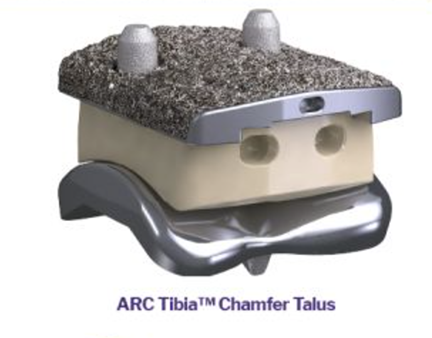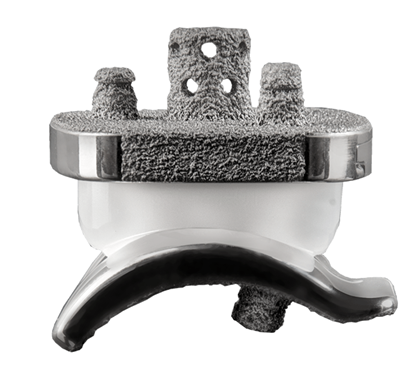Table of Contents
Ankle Replacement - Introduction
The ankle joint is very important for normal walking and fortunately, is resistant to forming arthritis. However, if the ankle has suffered injuries, advanced arthritis can set in over time. For those patients with end-stage arthritis of the ankle (limitation of motion and/or worn-out joint surfaces), there are relatively few treatment options outside of surgery. For some patients with end-stage ankle arthritis, ankle joint replacement is a viable option.
Ankle Replacement - History
The era of ankle replacement began in the 1970s, when a doctor tried to replace the ankle with an upside-down total hip replacement. Shortly thereafter, there were many attempts at developing a reliable total ankle replacement. Almost all of the early total ankle replacements failed for various reasons including: poor methods for attaching the implant to bone, inaccurate placement, and poor match to the normal joint mechanics. Second generation implants were developed in the late 1980s and early 1990s. Over the past 25 years, the instrumentation has improved, the implant materials and engineering have been refined, and reconstructive ankle surgeons are now considering the procedure a true alternative to joint fusion in some patients.
Ankle Replacement - Expected Outcome
Today, the clinical outcomes of ankle replacement are very good and are more predictable. In terms of function, the ankle replacement is better than an ankle fusion. This is because the ankle, when it is fused, limits up and down motion of the foot on the leg. Whereas the ankle replacement preserves motion at the ankle and allows improved function. The motion of the ankle implant also provides a protective function for the remaining joints in the foot, which can develop arthritis due to increased stress of a fused ankle. Patients who have their ankle fused will nearly always develop arthritis in these adjacent foot joints within 7-10 years after fusion.
Ankle Replacement - Since 2005
Since 2005, there have been several revolutionary implants designs that have completed the FDA process. These newer designs have significant advantages over the previous devices, including ease of placement and refined instrumentation for accuracy of placement. Our clinic has experience with the following US designs:
- APEX 3DTM;
- InboneTM;
- InfinityTM;
- InvisionTM;
- CadenceTM;
- Salto TalarisTM;
- STARTM;
- VantageTM;
- and Zimmer Trabecular MetalTM
Ankle Replacement in Edmonds, Bellevue, Redmond, Kirkland, WA and Surrounding Areas
Dr. Jeffrey Christensen has significant expertise in this area, having performed ankle joint replacements since 2003. Currently, he has one of the busiest total ankle practices on the west coast. Dr. Christensen has performed over 700 total ankle surgeries and is heavily involved in teaching total ankle surgery to surgeons and lecturing at national and regional meetings. He also has published and is actively performing research on total ankle replacement and ankle arthritis. He is on the APEX 3D™ surgeon design team for Paragon28, Inc.
Advantages
The main advantage of an ankle prothesis is the preservation of motion at the ankle. This is important for walking, hiking, bending, and climbing stairs. The ideal person for ankle replacement is someone with end-stage arthritis, over 50 years of age, not involved in strenuous activities, and not too heavy. After surgery, patients can walk, climb, hike, swim, and bike. Activities that are to be avoided include: running, court sports, jumping, or heavy labor that includes lifting. Patients with advanced diabetes, poor bone quality, or poor circulation are not good candidates for this surgery.
What to Expect?
The surgery usually involves one night in the hospital. The post-operative course involves close monitoring at the clinic. Range of motion can be initiated after the incision is healed. Weightbearing is delayed until bone stabilization has been completed which takes about 4-6 weeks.
Total Ankle Links





